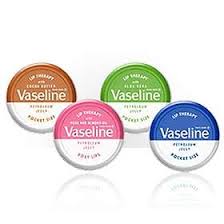
If you didn’t grow up with a tin of Vaseline in your schoolbag are you even Irish? Every mammy’s go to universal healer. A tin of Petroleum Jelly.
Petroleum jelly (also called petrolatum) is a mixture of mineral oils and waxes, which form a semi-solid jelly-like substance. Founded in 1859 when Robert Chesebrough noticed that oil workers would use a gooey jelly to heal their wounds and burns. He eventually packaged this jelly as Vaseline.
Petroleum jelly’s benefits come from its main ingredient petroleum, which helps seal your skin with a water-protective barrier. This helps your skin heal and retain moisture.

Here are 5 every day uses for Vaseline you may not know:
Heal minor skin scrapes and burns
Studies show that petroleum jelly is effective in keeping skin moist during post-surgery healing. This is also good for regular, less dramatic skin injuries. Always make sure that the surface you apply petroleum jelly on is properly cleaned and disinfected. Otherwise, bacteria and other pathogens can get trapped inside and delay the healing process.
Moisturize your face, hands, and more
Face and body lotion: Apply Vaseline after a shower. As an occlusive moisturizer, it prevents your skin from drying out. You can also use it for dry noses during cold or allergy season.
Advertised
Cracked heels: Soak your feet in warm water with some salt added to it. Towel-dry thoroughly and apply petroleum jelly and clean cotton socks.
Gardening hands: After washing and drying, use some petroleum jelly and a clean pair of gloves to help lock in moisture and accelerate healing.
Chapped lips: Apply to chapped lips as often as needed, and right before you go to sleep.
Split ends
Split ends can be a nightmare for some. With longer hair and with more of using heat to style our hairs split ends are a common and vexing hair complaint. Instead of lathering your hair in loads of expensive conditioner when you’re in the shower, try rubbing some Vaseline on the ends of your hair instead. Say goodbye to split ends!
Protective layer for perfume
Do you spray perfume on your skin in the morning, but have it disappear after only a few hours? Try rubbing a little Vaseline on your skin before spraying perfume. Spray it on top of the Vaseline. The ointment-like substance serves as a protective layer that’ll prevent the perfume from “soaking” too far into the skin.
To prevent chafing
Advertised
Chafing is a painful skin irritation that occurs when body parts rub together or rub against clothing. To prevent chafing that can lead to blisters, apply petroleum jelly to problem areas, such as the feet or thighs.



